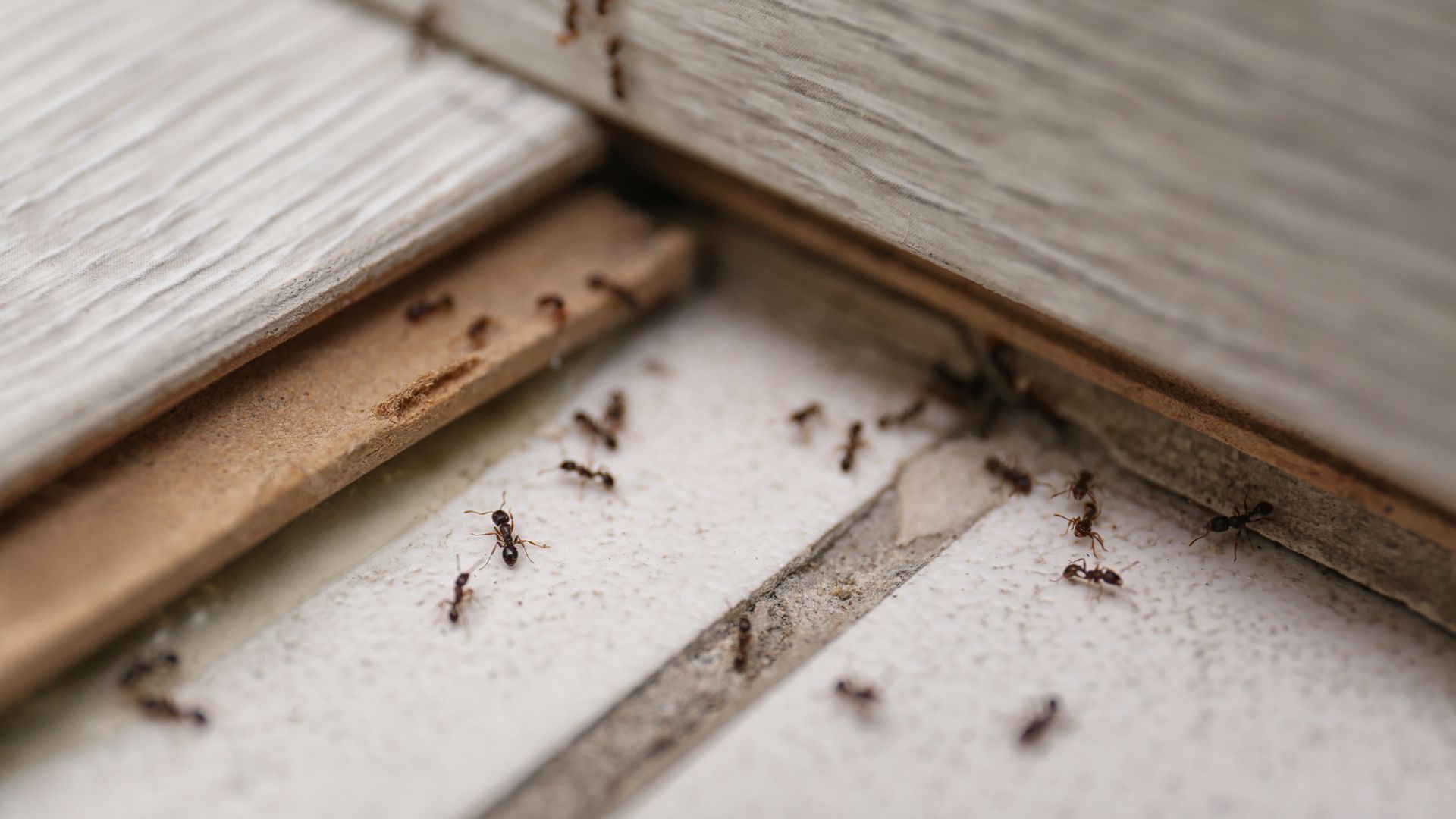Watch out for wasps and hornets. Wasps and hornets are dangerous partly because they can sting over and over. Most will only sting in self-defense, but some have broader ideas of self-defense than others. The sting is painful, and the venom can be life-threatening, especially for people who are allergic to wasp and hornet venom.
What To Watch Out For
There are many wasps and hornets around Las Vegas. The five below are the most common ones that pose a danger to humans.
- Bald Faced Hornets are actually beneficial as they eat flies and yellow jackets. They are usually 1-1.5 inches long and are large and black with yellow on them. They nest high up in trees and shrubs. They build large, oval, papery nests that can get as big as a basketball and have an entrance at the bottom. They aggressively guard their nests and their food sources. Their venom is highly potent so can cause a problem even if you are not allergic to it.
- Mud Daubers have yellow and black stripes and thin waists. They are solitary and usually docile. They eat nectar and spiders, which they sting and place in their nests. They build nests of mud that look like pipe organs. If you step on the nest or otherwise disturb it, they will sting--and their stings are painful!
- Paper Wasps are golden brown, slender waisted, and long-legged. They nest in trees and shrubs and make umbrella-shaped nests. They are beneficial, killing and eating other insects, but will sting if they feel their nest is in danger. The sting is painful. They usually cause trouble when they build their nest around doorways or other high-traffic areas.
- European Hornets are usually around 1.5 inches long and are red with brown and yellow stripes. They also put their nest high up in trees and shrubs. The papery oval nest can be the size of a basketball. European hornets are usually docile but will attack if you get too close to their nest or to food sources they are guarding.
- Yellow Jackets are usually yellow with black splashes on them. They are small, but very fierce when defending their nest or a food source. They can nest in between walls and other structures, and their sting is painful and will make you sick.
Wasp and Hornet Lifecycles
All wasps and hornets have about the same life cycle. In the fall, the new queens and males mate. The new queens hibernate over the winter. The old queen, males, sterile females, and larvae die over the winter from cold, old age, or starvation. Old nests are not used again. In the spring, queens start a small nest and start laying eggs in paper cells. As the offspring hatch, they are fed dead bugs until it is time for them to pupate and emerge as adults. As more females are born, they take over constructing the nest, finding food, and rearing larvae.
Getting Rid Of The Wasps And Hornets Near You
Some people try to deal with wasps and hornets themselves. Spraying a nest with pesticides, even if you can spray from a distance, is dangerous. If you do not do it right, the whole colony will come boiling out and head your way. If stung by large numbers of wasps and hornets, you could become very sick or even die. The stings are very painful, too. Knocking down nests that appear to be inactive can also lead to painful stings. Wasps and hornets' nests are not really a DIY project.
Get Professional Help
If you are not able to get rid of the wasps and hornets around your Las Vegas home, Anderson Pest Control can help you. When you contact us, we will send one of our friendly, experienced technicians out to your house. They will examine your property inside and out and make a plan of action. We always use the least toxic solutions so you and your family and pets are safe. Our technician will also suggest ways to make your home less attractive to pests. Call Anderson Pest Control at (702) 356-0183 today and get rid of your wasps and hornets.

